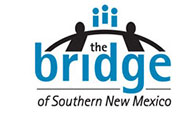Generating the Greatest Impact with the Money We Do Have
Originally published in the Las Cruces Bulletin on Friday, December 20, 2019
“We don’t have enough money to do _________________.”
That seems to be a foundational premise when thinking about how to improve outcomes for our children, our families, our community, and our state.
I don’t disagree that, in many cases, it is true. However, in the case of developing a skilled and ready workforce, we actually do have a significant amount of money to make change. It’s about how and where we invest it that can make all the difference in the world.
Some of the heroes of our workforce development story are people like Carrie Hernandez and Michelle Ballard, who help prepare students for the future by leading the career readiness work in Las Cruces Public Schools and the Gadsden Independent School District, respectively, and Fred Owensby and Mary Ulrich at Dona Ana Community College. They and their teams are working alongside Career and Technical Education (CTE) instructors to optimally align hands-on, career-focused instruction in a host of fields to ready their students for future careers.
Revisions to the Federal funding for CTE has created the opportunity for better prioritize support for CTE pathways and programs that are tied to high-demand careers in communities, especially those that offer higher wages – like careers in healthcare and STEM (Science, Technology, Engineering, and Math) fields. Each year, New Mexico gets about $5 million to support these programs, and the state matched those funds this past legislative session with a $5 million appropriation, as part of its efforts to invest in building a 21st Century education system.
Funding decisions will driven by regional “consortia” comprised of a majority of business and economic development leaders, as well as the public and higher education partners who run CTE programs. The consortia will review labor market information, consider economic development targets, and focus their investments on programs that provide the best possible career prospects for students and economic returns on those investments.
Because of the composition of the consortia, The Bridge of Southern New Mexico wanted to play a role in seeding these efforts statewide. The consortia look exactly like The Bridge’s board of directors, which has been a powerful force for change in Doña Ana County. So, we bid on and won a contract with the State to help communities do what we have done – place business in partnership with education to strategically identify high value industries and then align education and workforce assets in support of building talent for industries.
We’ve seen, as a community, what can happen when business, economic development, government and education work together as partners. We are thrilled to share our experiences with other communities and hopefully, lay the foundation for similar collaborations statewide.
Additionally, it provides the opportunity to do a hand-off of these efforts to the local Workforce Connections providers. New Mexico currently receives $25 million in funding from the Federal government for our workforce system, which is disbursed through four regional workforce boards. Those boards are tasked with, just like in the CTE funding, prioritizing their funding to support their job seekers in securing careers with business customers in high-value industries through Sector Strategies.
These Sector Strategies begin with convening and collecting business voice and input on their workforce to help guide these funds to optimally help those who are unemployed, underemployed, or face barriers to employment to secure training or whatever else is needed to be qualified for great jobs that boost them and their families economically. Career pathways provide the “maps” to workforce opportunities in these industries at the low-, middle-, and high-skilled levels needed to support any industry.
Ideally, these investments can generate the greatest rewards for us all when they are used to equip current and future workforce talent in the very industries Gov. Lujan-Grisham has identified are vital to diversifying and strengthening New Mexico’s economy:
- Aerospace
- Biosciences
- Cybersecurity
- Digital Media
- Education
- Global Trade
- Healthcare
- Intelligent Manufacturing
- Outdoor Recreation
- Sustainable Energy
- Sustainable and Value-Added Agriculture
So, just in these two areas, we have $35 million per year to spark the kind of change that improves incomes for individuals and families and outcomes for businesses and economic developers. And there are millions more available for workforce development in the Temporary Assistance for Needy Families (TANF) program, adult education, Health and Human Services, and many others. Some are Federally-funded, and some are state funded.
As New Mexico begins to better align these dollars to support stronger earning power for people and deep pools of workforce talent for business and industry, we can systemically boost economic outcomes that will transform the state’s future and the wellbeing of families for years to come.

